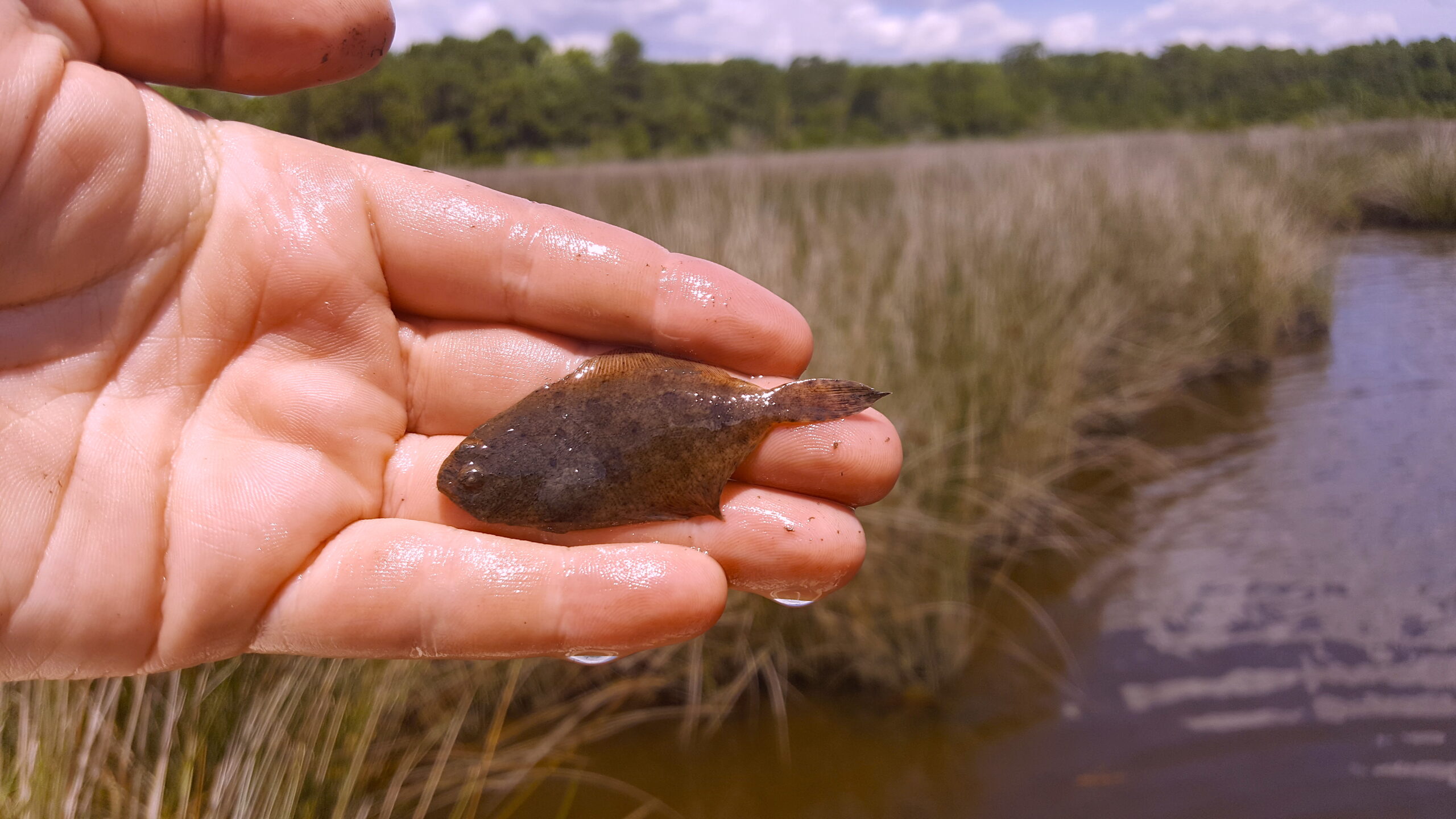Do Warmer Waters Cause Flounder to Become Male?

New research shows that higher temperatures can masculinize southern flounder populations.
Research Need
For many reptiles and some fishes, their sex can be determined by the temperatures in their surrounding environment. Southern flounder exhibit this “temperature-dependent sex determination” when exposure to warm or cool temperatures during a critical period early in juvenile development can cause genetic females to develop as males.
For many years, the southern flounder fisheries have been a concern, and stock assessments indicate overfishing. These fisheries use minimum size limits for management and depend heavily on larger-growing females, with males rarely reaching catch sizes.
With warming waters due to global climate change — and with southern flounder fisheries relying on large females — it raises the critical question whether masculinization is occurring in wild populations of the species.
What did they study?
From 2014 to 2017, researchers examined the male-to-female sex ratios of juvenile southern flounder populations across a range of nursery habitats along coastal North Carolina and compared them to the water temperatures recorded during the species’ critical period of development.
What did they find?
Northern habitats had an average water temperature of 73°F (23°C) and produced the greatest number of female flounder and the closest to 50:50 male-to-female sex ratios across all years.
In contrast, southern habitats produced significantly skewed sex ratios over all sampling years, with up to 94% of the fish being male. The southern sampling region was also associated with the warmest water temperatures, on average 7.2°F (4°C) warmer than that of northern habitats.
Researchers replicated the male-biased sex ratios in the laboratory by using controlled tank studies to mimic temperatures of the nursery habitats, providing strong evidence that temperature is a key factor influencing sex ratios in nursery habitats.
Although the juvenile sex ratios consistently skewed male in regions with warmer water temperatures, it is still unclear how this translates to the sex ratio of adult populations of southern flounder. However, with a female-dependent fishery and global water temperatures projected to significantly increase, the effects on sex ratios could be a concern for wild flounder stocks — and potentially for other species that exhibit temperature-dependent sex determination.
What else did they find?
Interestingly, juvenile flounder captured in the southern region were smaller on average than fish caught in northern or intermediate habitats. The smaller size could be due to slower growth rates or that they were younger and thus were spawned later in the season. In either case, these smaller fish would reach the critical window when they are sensitive to temperature much later in the summer when water temperatures typically are much higher.
Reading
Honeycutt, J.L., Deck, C.A., Miller, S.C., Severance, M.E., Atkins, E.B., Luckenbach, J.A., Buckel, J.A., Daniels, H.V., Rice, J.A., Borski, R.J. and Godwin, J., 2019. Warmer waters masculinize wild populations of a fish with temperature-dependent sex determination. Scientific reports, 9(1), p.6527. https://doi.org/10.1038/s41598-019-42944-x
Summary by Jamie L. Honeycutt, postdoctoral researcher at NC State
Several partners have supported this research, including North Carolina Sea Grant, NC State’s College of Sciences, and NC State’s College of Agriculture and Life Sciences, the N.C. Division of Marine Fisheries, the National Oceanic and Atmospheric Administration, and private local landowners. Read more about Core Research funding from North Carolina Sea Grant here.
Lead photo: juvenile southern flounder, by Jamie L. Honeycutt
The text from Hook, Line & Science is available to reprint and republish at no cost, but only in its entirety and with this attribution: Hook, Line & Science, courtesy of Scott Baker and Sara Mirabilio, North Carolina Sea Grant. HookLineScience.com
- Categories:



